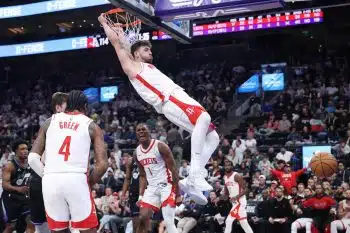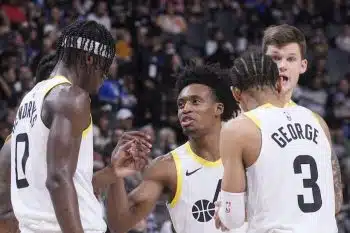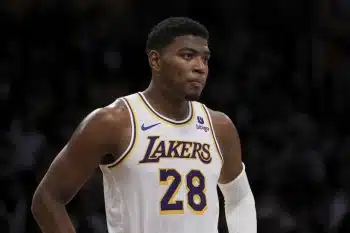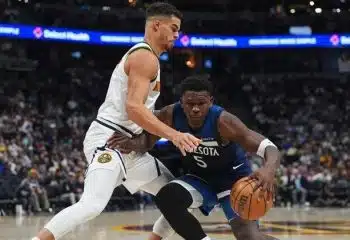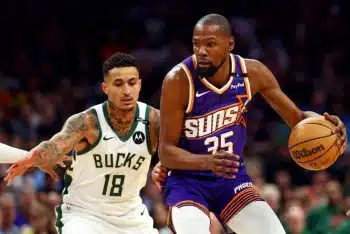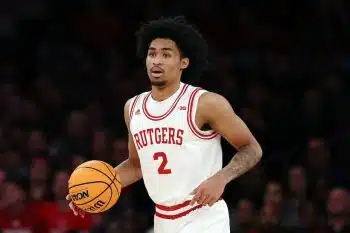NBA
NBA PM: Why D-League May Be Viable Alternative to NCAA
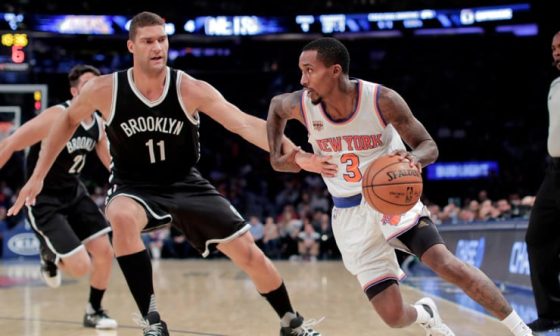
Back in August 2006, Brandon Jennings seemed to have the basketball world in his hands.
After starring at Oak Hill Academy, Jennings found himself as the top ranked prospect by both Scout.com and ESPN. He decided to attend the University of Southern California before changing his mind and declaring his allegiance to the University of Arizona.
Finally, shortly before the 2008 NBA Draft, Jennings let it be known that he would instead head to Italy and begin his professional career. After all, he had to find some way to bide his time until he was draft-eligible in 2009.
Since the time when Jennings was finishing up at Oak Hill, because of the age restriction agreed upon by the league and the union in the 2005 collective bargaining agreement, players like him have had to wait at least one year following their high school graduation year to declare for the NBA.
The rule has given rise to the “one-and-done” freshman — players who are good enough to become lottery picks in the NBA but are forced to spend a year playing collegiately. Jennings, though, took a different path. He instead blazed a trail that saw him forgo college for the professional ranks in Europe. His career has been an unquestioned success, but with the NBA and its players union hammering out the details of what will be the 2017 collective bargaining agreement, a reported increase in the annual salaries paid to NBA D-League players could help the league become a viable third option for NBA-bound players who want to earn a wage or feel they would benefit from playing against other aspiring professionals.
As reported by ESPN’s Marc Stein, under the 2017 CBA, salaries for D-League players are expected to rise dramatically, increasing from about $25,000 per year to somewhere between $50,000 and $75,000.
Of course, those figures pale in comparison to the $1.2 million Jennings signed for, but for a great majority of players, the nine-year pro thinks it could make sense.
“I think it just depends on if they can’t get the type of money that they want to go overseas,” Jennings told Basketball Insiders.
“Some guys go overseas for $75,000,” he said, realizing that if the financial implications were similar, most players would prefer to play in the D-League merely for the benefit of being closer to (and more easily seen by) NBA power brokers.
“The D-League wouldn’t be bad, just the fact that NBA teams can see you every day and see your skills and see how good you’re getting. At that time when I was coming up, I didn’t even really think about the D-League like that, but I feel like I made the best decision for myself… It just depends on your situation.”
Another factor that could weigh heavily on future players is comfort-zone. Before packing his bags for Italy, Jennings had never left the country. But the prospect of moving to Europe was made less daunting after moving from his native Compton, California to attend Oak Hill in Southwest Virginia. But for a great many 17- and 18-year-old high school kids, the thought of moving to Italy, Spain or Greece may be as off putting as it is exciting. It truly would depend on the player’s situation.
“I didn’t mind leaving because I had already left,” Jennings said. “I was at Oak Hill for two years. For me, I didn’t mind being away for home, it was just way further and way different, especially the language.”
In the end, though, Jennings thought that the move to Italy was the right one for him. And it’s hard to argue with the results. Nine years into his career, he’s averaging 15.5 points, 5.9 assists and 3.1 rebounds per game. He is certainly a starting-caliber point guard who’s mostly lived up to the expectations.
For most American-born players, college offers a rite of passage where young men grow into adults and a social atmosphere that often breeds maturity. The educational opportunity is also a great one, but, as Jennings has proven, there may be more than one road to the same place.
In fact, there may now be three. With the D-League continuing to house its players, provide medical coverage and a reasonable $50 per-diem, the financial landscape has shifted dramatically. Don’t be surprised if, within the next few years, there are high school players opting for the D-League over college.
“I would never tell a kid not to go to college, my decision was just for my decision, for my family,” Jennings said. “I would tell [a prospect] to make sure it’s the decision that he wants, not the decision that everyone wants for him – because if he regrets it, it’s on him.”
As it stands, there is a fair amount of discord as to who the true beneficiary is of the NBA’s age requirement. Of course, there are benefits to opting for a long, storied college career, just as there are benefits to beginning as a pro.
“I think just, honestly, just being able to play with grown men every day and seeing different things in the world,” Jennings responded when asked about the benefits of becoming a pro when he did. “My mindset, when I came back, was totally different… To be around grown men every day, to practice every day, the things I went through, I felt like it was a time of my life where everything was uncomfortable and I felt like I responded well.”
In all likelihood, any player in the predicament that Jennings was in would have similar experiences and benefits. The debate as to whether the age requirement is good for the league or not will persist, but in the end, with the D-League now offering a more competitive salary, there may be an additional option for high schoolers with their eyes on the NBA.
And that, we can all agree, is a good thing.
